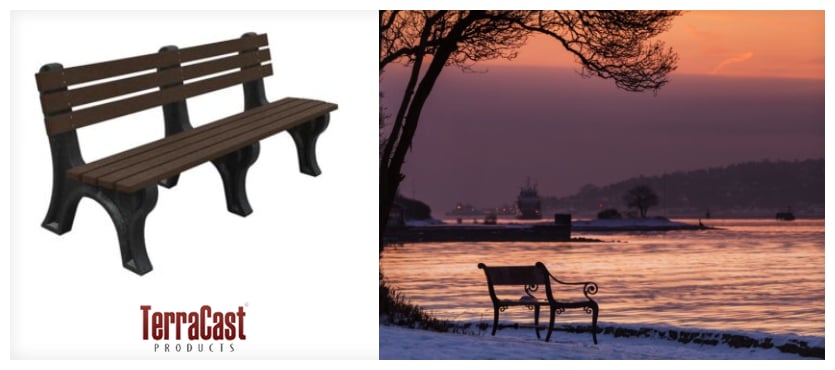In urban design, outdoor furnishings play a pivotal role in shaping the experience of public spaces. These items must strike a balance between durability and aesthetics, creating spaces that are both functional and visually appealing. Traditional materials like wood, metal, and concrete have long been used, but they often fall short in harsh urban environments, either deteriorating too quickly or lacking flexibility in design. Resin, on the other hand, has emerged as a material that seamlessly combines strength, longevity, and design versatility. It not only withstands the physical challenges posed by cities but also offers endless possibilities for creating modern, attractive urban furnishings.
Durability in Urban Environments
Urban environments pose significant challenges for outdoor furniture and fixtures. Exposure to various weather conditions, pollution, and constant human interaction can quickly wear down materials like wood, metal, and concrete. However, resin excels in these environments due to its resilience against moisture, UV rays, and extreme temperature changes.
Unlike wood, which can rot, or metal, which can rust, it is impervious to weather damage. It resists warping, cracking, and corrosion, ensuring that outdoor furniture and installations maintain their integrity over time. For cities and businesses, this means fewer replacements and repairs, making resin furnishings a long-lasting solution.
Weather Resistance and Longevity
Urban furnishings need to withstand not only human wear and tear but also environmental stressors. Resin’s resistance to UV radiation ensures that furniture doesn’t fade or weaken after years of sun exposure. It also doesn’t absorb water, making it immune to issues like swelling, cracking, or mold growth. This durability extends the lifespan of resin furnishings well beyond that of traditional materials, significantly reducing maintenance costs for cities and businesses.
Furthermore, resin products like planters and benches remain structurally sound even after years of exposure to freezing temperatures, heavy rains, or scorching sun. The material’s chemical composition ensures it remains stable and resistant to environmental degradation, a crucial advantage in cities with varied weather conditions.
Low Maintenance and Cost-Effectiveness
One of the primary benefits of resin is its low maintenance needs. In urban settings, constant upkeep is a challenge, especially with high traffic in public areas. Resin furniture, planters, and light pole bases require little more than occasional cleaning with soap and water. This low-maintenance nature not only reduces upkeep costs but also allows city maintenance crews to focus on other tasks.
Compared to materials like wood, which need periodic refinishing, or metal, which may need rust-proofing and repainting, resin products offer a hassle-free solution. This is especially important in urban environments, where public fixtures are expected to endure years of use with minimal maintenance.
Resin also offers a significant advantage in terms of cost-effectiveness. While the initial price of resin furnishings may be comparable to or slightly higher than other materials, the long-term savings are considerable. With fewer replacements, lower maintenance costs, and a longer lifespan, resin proves to be a highly economical choice for urban design.
Aesthetic Flexibility in Design
Despite its rugged durability, resin doesn’t compromise on aesthetics. One of the most appealing aspects of resin is its versatility in design. It can be molded into various shapes and sizes, from sleek modern styles to more traditional forms, making it adaptable to a wide range of urban settings.
Resin can also mimic the appearance of other materials, such as stone or wood, without inheriting their downsides. For example, resin planters can be made to look like natural stone while remaining lightweight and easy to transport. This flexibility allows urban planners and architects to create visually appealing spaces that complement their surroundings without sacrificing functionality.
Customization and Color Retention
Another aesthetic advantage of resin is its ability to be customized. It can be produced in a variety of colors and finishes, ensuring that it complements the overall design of an urban space. Moreover, unlike painted metal or stained wood, the color of resin products is embedded in the material itself. This means that even after years of exposure to the elements, the color remains vibrant and intact, eliminating the need for repainting or refinishing.
The aesthetic flexibility of resin allows urban designers to create cohesive, visually striking environments while ensuring that the furniture and fixtures remain functional and durable.
Lightweight and Easy to Install
In addition to its durability and design versatility, resin is also lightweight, making it easy to handle and install. This is particularly important for rooftop gardens and urban spaces where weight can be a concern. Traditional materials like concrete or metal often require cranes or heavy machinery for installation, driving up labor costs and logistical challenges.
Resin planters, on the other hand, can be transported and installed with much less effort. They can be moved up to rooftops using standard elevators or staircases, saving time and resources. This makes resin an ideal material for urban spaces where installation ease is critical.
Sustainable and Eco-Friendly Options
Another important consideration in today’s urban planning is sustainability. Many resin products, including those from TerraCast®, are made from recycled materials, reducing the environmental impact. Resin can be recycled at the end of its life cycle, making it an eco-friendly option for cities aiming to reduce waste and support sustainable practices.
By choosing resin products, urban planners can create durable, aesthetically pleasing spaces while also contributing to a more sustainable future. The use of recycled materials and the long lifespan of these products further emphasize their value as a sustainable choice for urban environments.
Resin’s Unmatched Versatility for Urban Furnishings
Resin has proven itself to be the best material for urban furnishings, offering a rare combination of durability, aesthetic flexibility, low maintenance, and sustainability. Whether it’s for seating, planters, or light pole bases, resin products from TerraCast® provide cities with cost-effective, long-lasting solutions that meet the demands of modern urban environments. By incorporating resin into their designs, urban planners can create attractive, resilient spaces that stand the test of time. For more information on how TerraCast® can enhance your urban design, feel free to contact us.

